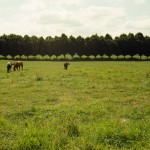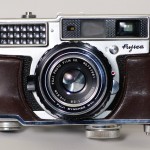Feb
17
2012
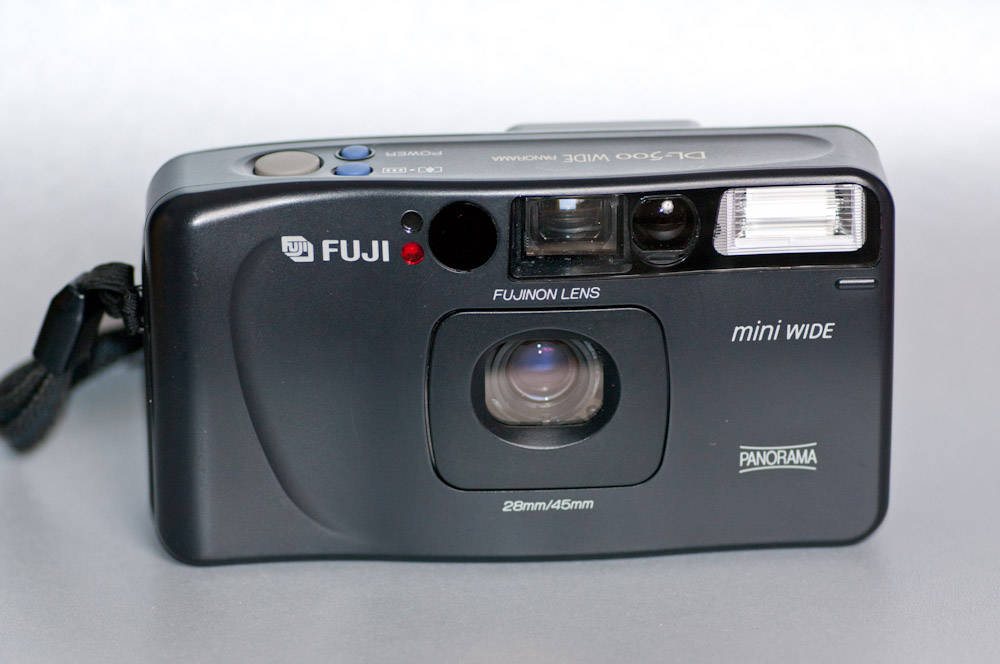
There’s so much silk screening on this camera I can hardly determine what to call it. “Fuji DL-500 WIDE Panorama” “Fuji mini wide” It is however the DL-500. The most unique feature of this camera is that it has two focal lengths 28mm and 45mm, not something in between. This arrangement is made by swinging an additional lens element internally into the light path and repositioning the lens at the same time. A button on the top of the camera toggles between the two focal lengths. Additionally the viewfinder magnification changes to give an equivalent view for the selected focal length.

With the camera set to 28mm the secondary lens element can be seen hidden away in the bottom left corner just beneath the shutter.
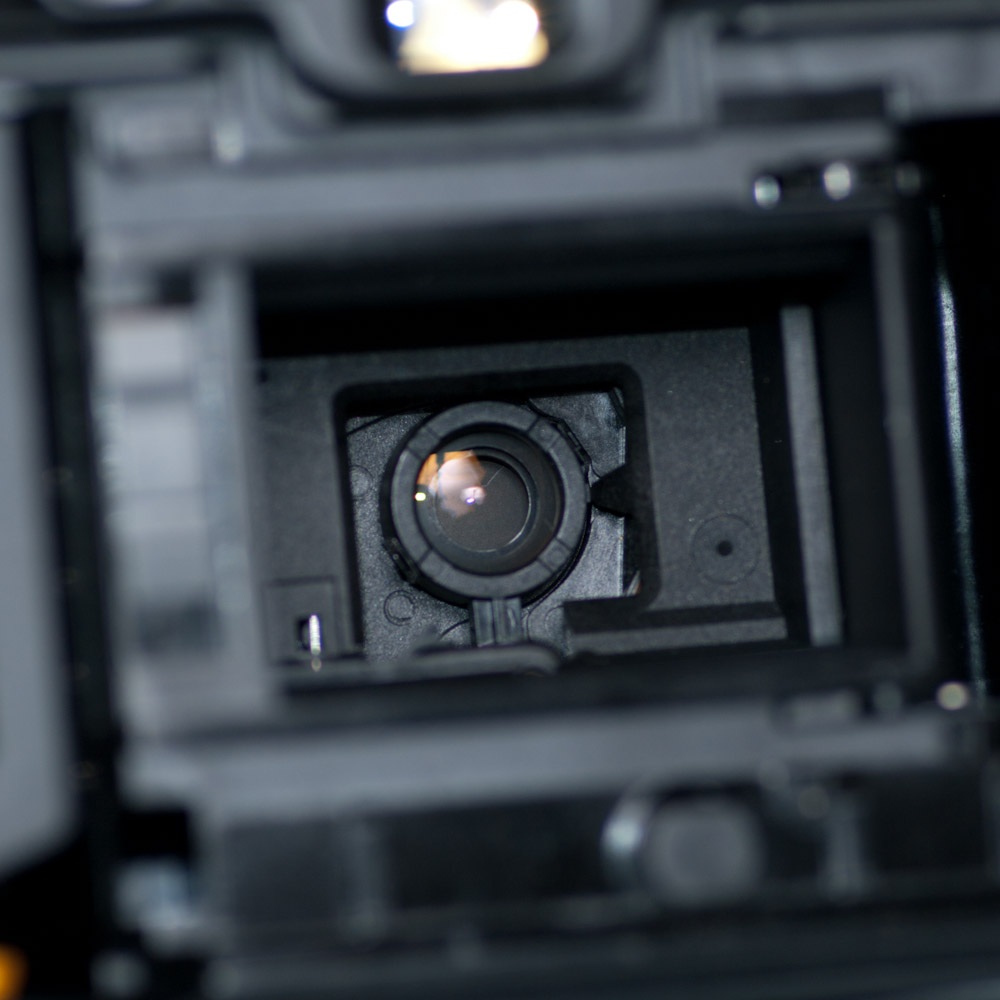 Here you can see the camera now set to 45mm with the additional lens element swung into place.
Here you can see the camera now set to 45mm with the additional lens element swung into place.
Samples of the two focal lengths.




I was initially pretty excited by the prospect of this camera because of the wide 28mm focal length, there are very few 35mm film point and shoots that have lenses this wide. But the image quality of the lens in either focal length is not particularly good. The images are quite soft and there is a great amount of vignetting especially with the 28mm setting. That said though it is compact, light weight and 28mm.
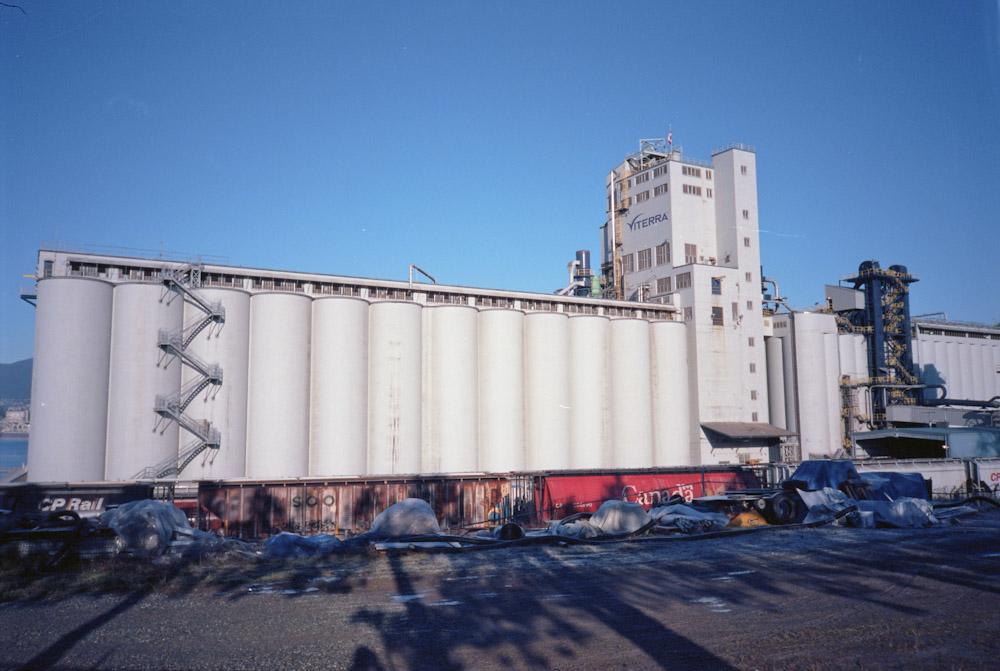
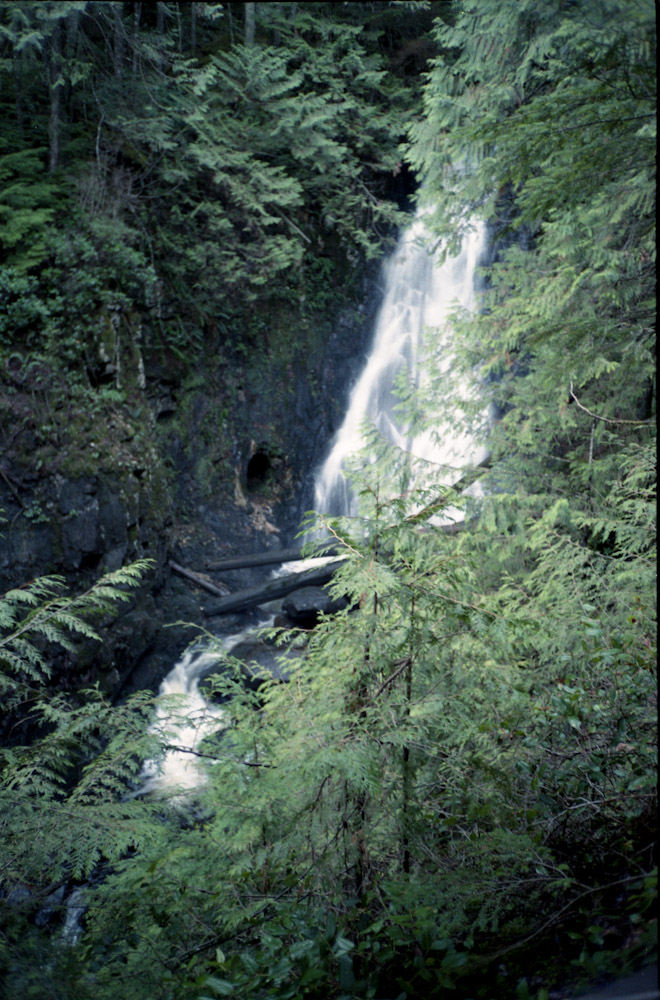
Two more quick notes about this camera. It requires two batteries to operate. A CR123A 3V lithium battery but also a CR2025 that is located inside the back of the camera. Both are required unlike some cameras that use the smaller battery just for date imprint functions. Also in order to set the mask for panorama images you need to open the back and make that change inside the camera, for obvious reasons you can only do this before you start shooting. I may give this camera another try in the future but if I do I will try closer distances and see if that makes a difference in the images, street photography perhaps.
3 comments | tags: camera, film, Fuji, Photography | posted in Cameras, Photography
Nov
4
2011
Previously I borrowed a Fuji F200EXR from Duncan Turner of DLT photographic , the point of which was for me to evaluate the technology that Fuji refers to as EXR. What this technology essentially does is capture two separate exposures at the sensor level at the same time by using half the total photo sights for each exposure. The trade off of this is a reduced resolution, to half of the total. The benefit is a greater dynamic range. In the case of the F200EXR the resolution drops from 12mpixels to 6 Mpixels when used in EXR dynamic range mode.
This isn’t a lab or a studio test of EXR for this camera but as close to a practical real world usage as I could make it. What I found was that the difference was subtle and it was really only necessary to go into EXR mode under harsh lighting, such as a shaded forest with bright sky in the back ground. In EXR %400 mode a similar exposure allowed for some retention of highlight detail where in full resolution mode some highlights were clipped. As there is no RAW shooting mode for this camera all images where jpegs. And here is the thing, I don’t think that the EXR results would be superior to a similar camera that allowed RAW shooting. With a slight under exposure bias to preserve highlights followed by some image adjustments during RAW conversion I think that all the stated benefits of EXR could be duplicated. In fact even the high resolution jpegs from the the F200EXR can be adjusted to produce similar results with the right exposure (again a slight under exposure to preserve highlights)
There are subtle differences between the two modes but is it enough to justify the drop in megapixels? I will answer that “No”. Both modes produce good results with the trade offs mentioned. So what do I think this means in relation to the new Fuji X10 that is being released and soon to be available? I think that the camera will need to stand on it’s other merits such as it’s fast F2.0 lens and it’s optical viewfinder because if you need to look this hard to see a real difference, your time could be better spent taking pictures. I hope I’m prove wrong when the X10 arrives as an advancement in camera technology is worth a bruise to my ego.
High Resolution mode, notice the clipped highlights on the histogram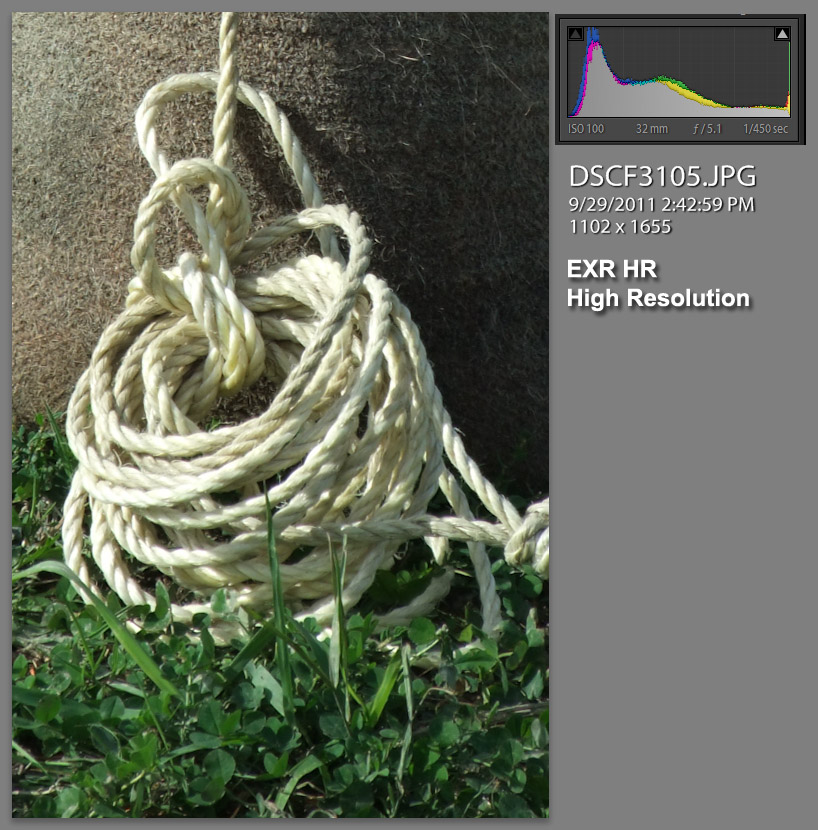
EXR High Dynamic Range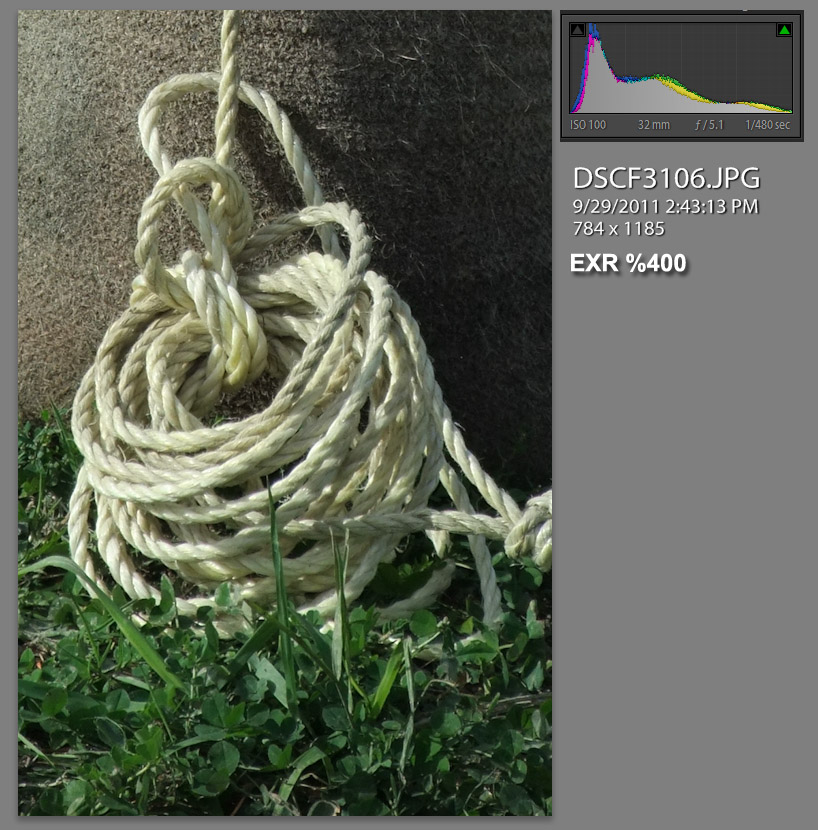
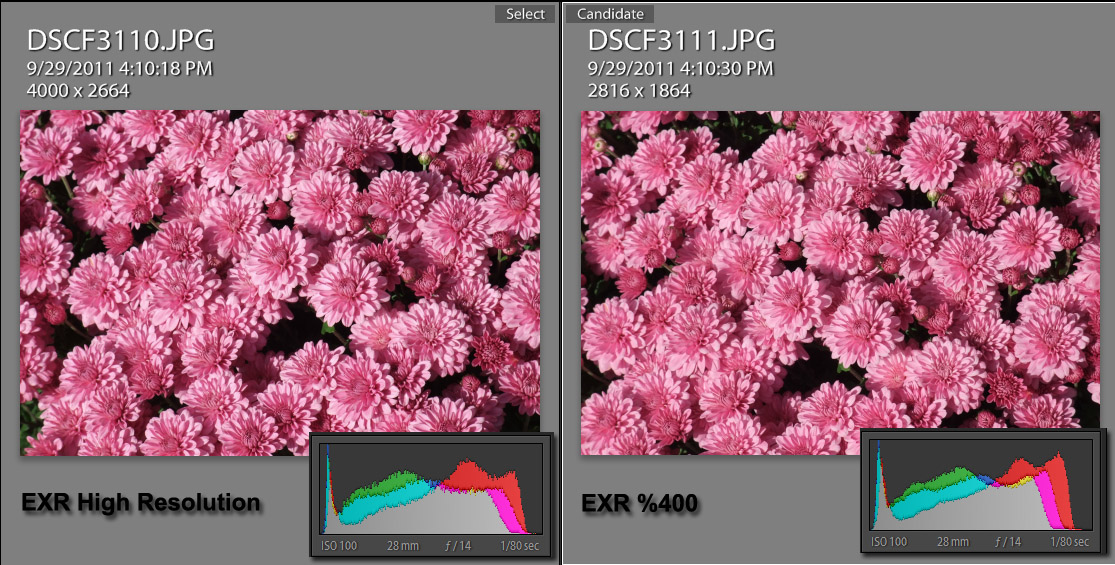
Zoomed in High Resolution on the left EXR on the right
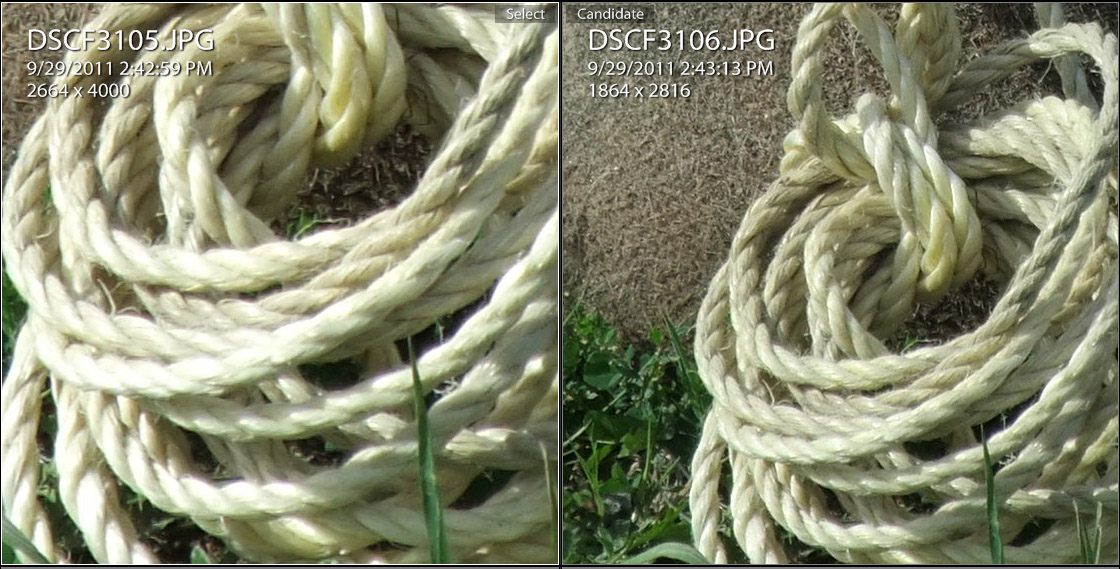
1 comment | tags: Digital, EXR, Fuji, Photography | posted in Cameras, Photography, Uncategorized
Oct
30
2011
Some random shots from my Fujica 35SE. I’ve been thinking about Fuji lately as their new camera the X10 will become available soon. I’m looking forward to having a look at one but for now I thought use what you have.

no comments | tags: film, Fuji, Fujica | posted in Cameras, Photography
Sep
4
2011
Fuji has released yet another camera that has peaked my interest, the Fuji X10. It is a small fixed zoom lens camera (28-112mm equivalent) with a maximum aperture of F2.0 at the wide end and F2.8 at the telephoto end. All this information is readily available elsewhere so that’s not really what I want to post about. One of the new features of the X10 apparently is that manual focus is performed in the form of the sub command dial. This may seem new and innovative but it is actually something Fuji has done before. The Fujica 35SE used a thumb wheel back in 1959 in combination with a coupled rangefinder. In this form I can say it works very well, the only problem for me being that that same location changes my aperture on my DSLR and it takes me a moment to get that through my skull. How well the modern implementation works remains to be seen especially without the rangefinder patch. When I first started writing this post most of the scant info about manual focus mentioned the main command wheel for focusing but after reading more info from Fuji itself it seems that it is the sub command dial which will not be as easily done with a thumb or even one handed.

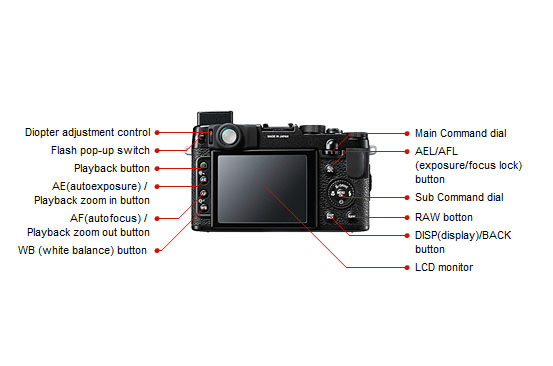
1 comment | tags: Cameras, Fuji, Fujica, x10 | posted in Cameras, Uncategorized
 Here you can see the camera now set to 45mm with the additional lens element swung into place.
Here you can see the camera now set to 45mm with the additional lens element swung into place.














